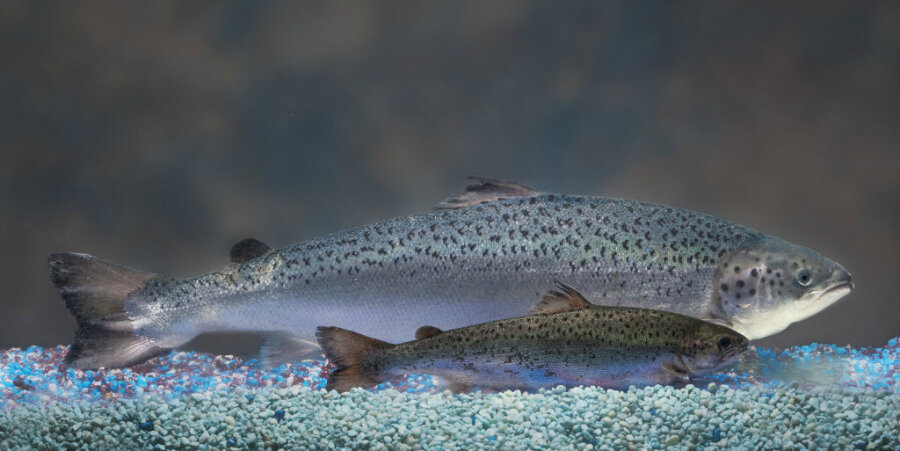GMO 'frankenfish' salmon gets FDA approval. Now what?
Loading...
After years of contentious debate, 'frankenfish' may finally be on its way to a supermarket near you.
The US Food And Drug Administration in November began allowing a genetically engineered (GE) animal to be produced for consumption – a first for America.
The Massachusetts company AquaBounty Technologies was given approval to make available a genetically modified Atlantic salmon, the AquaAdvantage Salmon.
The company added a growth-hormone-regulating gene from the Pacific Chinook salmon and a gene from an eel called the ocean pout to allow the new salmon to produce growth hormones year-round instead of only in the spring and summer.
The Obama Administration had been reluctant to approve the fish since 2010, citing safety concerns. But now the FDA decision is a precedent that may mean more genetically altered animals are on their way.
Bernadette Dunham, director of the FDA’s Center for Veterinary Medicine, said the modified salmon met federal guidelines.
"The FDA has thoroughly analyzed and evaluated the data and information submitted by AquaBounty Technologies regarding AquaAdvantage Salmon and determined that they have met the regulatory requirements for approval, including that food from the fish is safe to eat,” she said.
Despite its approval, many still contend that raising animals with manipulated DNA poses health concerns and could be a danger to natural habitats. Others say it crosses ethical boundaries. The FDA approval requires that the fish be raised outside the US.
Others wish the FDA would require mandatory labeling of the fish, instead of issuing volunteer recommendations for consumers and businesses looking to avoid the man-made creation.
“We recognize that some consumers are interested in knowing whether food ingredients are derived from GE sources,” said Susan Mayne, director of the FDA’s Center for Food Safety and Applied Nutrition. “The FDA is issuing two guidance documents that explain how food companies that want to voluntarily label their products can provide this information to consumers.”
“Despite FDA’s flawed and irresponsible approval of the first genetically engineered animal for human consumption, it’s clear that there is no place in the U.S. market for genetically engineered salmon,” said Lisa Archer, Food and Technology program director at Friends of the Earth, in a statement. “People don’t want to eat it and grocery stores are refusing to sell it.” One poll found that 75 percent of respondents had concerns about genetically altered food.
It could be more than two years before the modified salmon moves into supermarkets, according to AquaBounty, while at least one organization, the Center for Food Safety, said it will take legal action to fight the FDA decision.
“The fallout from this decision will have enormous impact on the environment,” said Andrew Kimbrell, executive director for the group. “Center for Food Safety has no choice but to file suit to stop the introduction of this dangerous contaminant. FDA has neglected its responsibility to protect the public.”





